

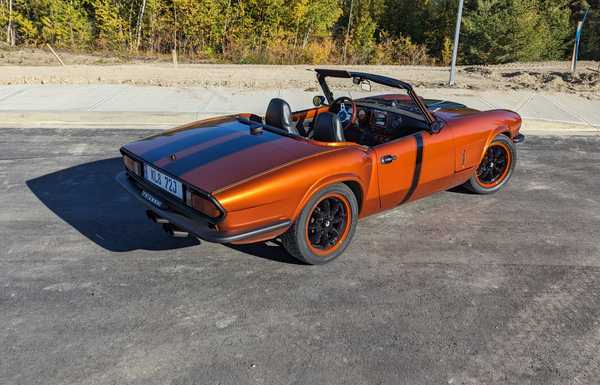
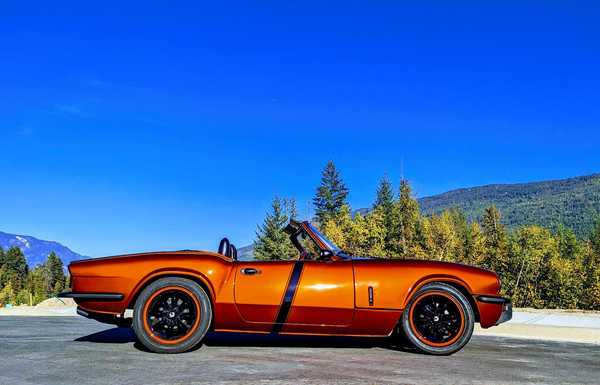
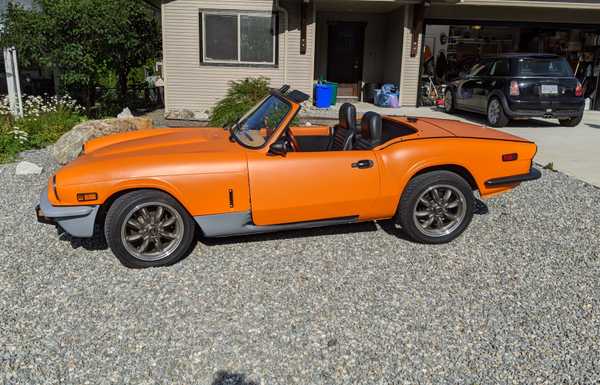
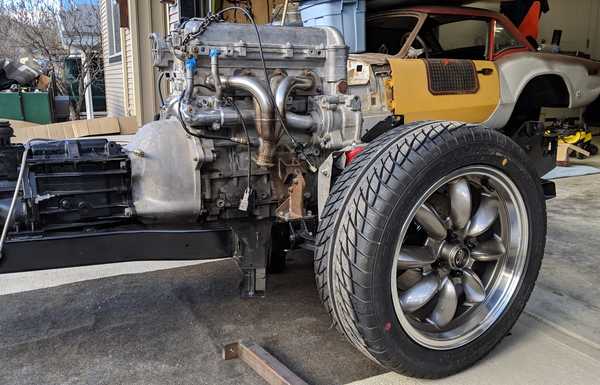
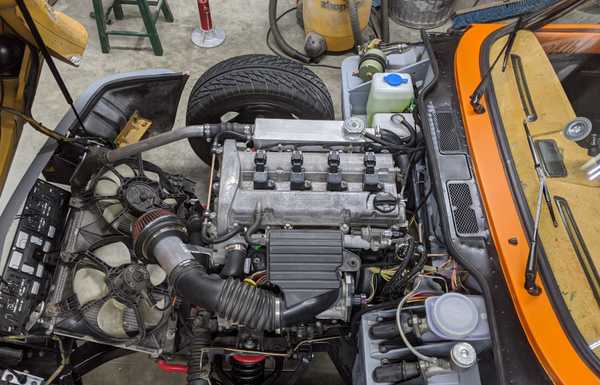
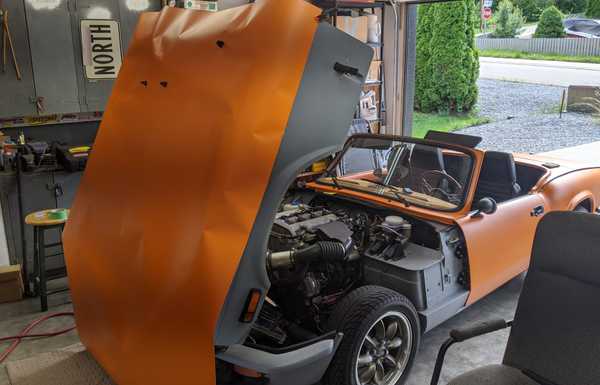
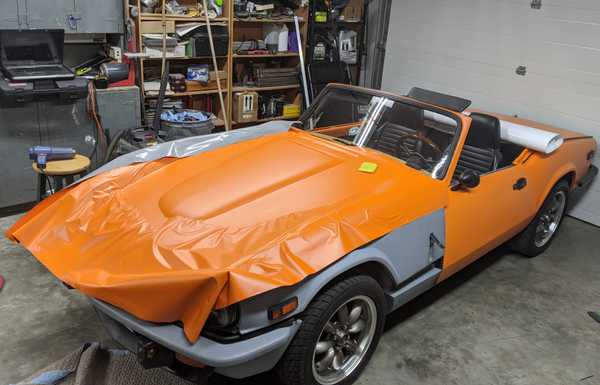

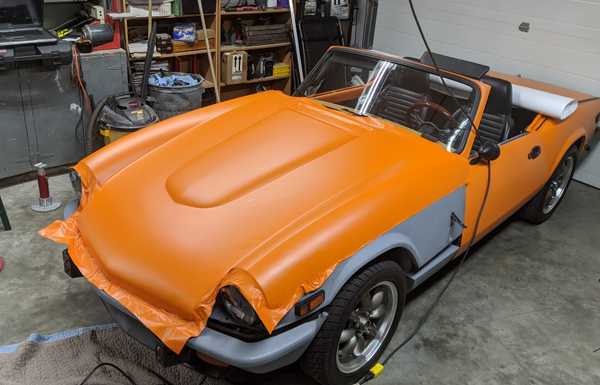
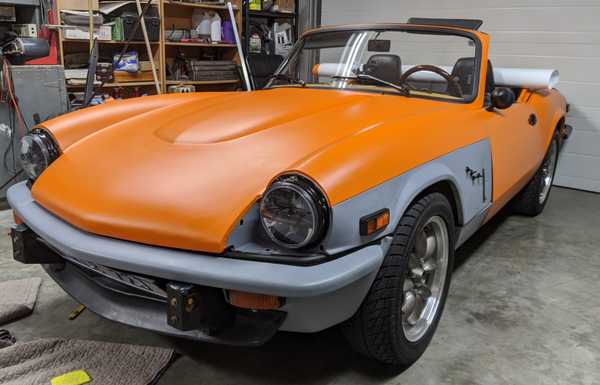
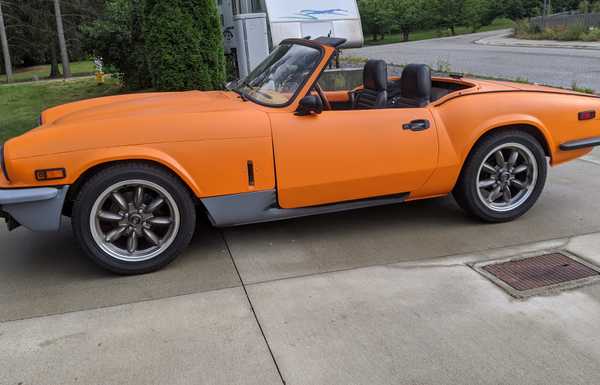
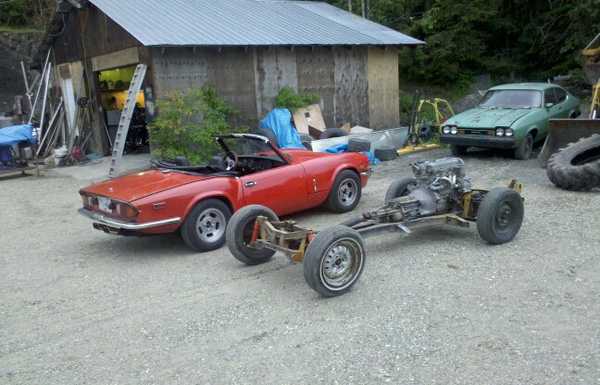
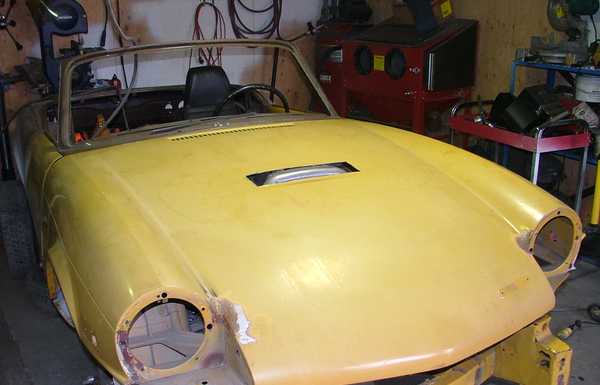

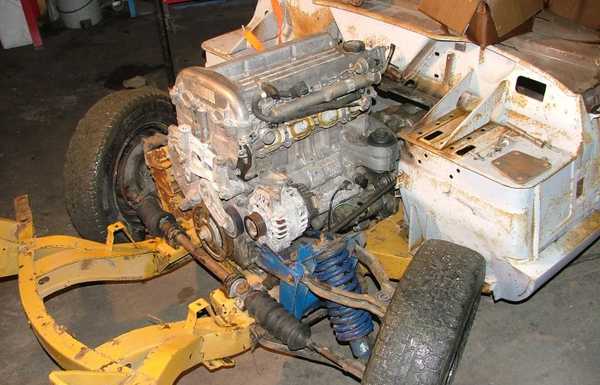


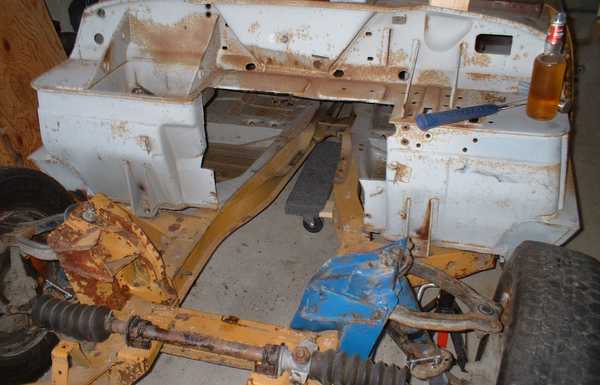
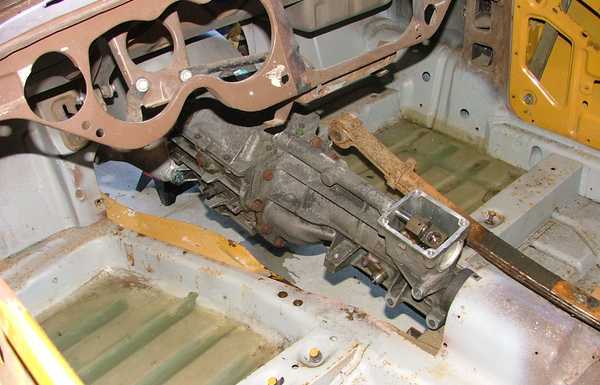
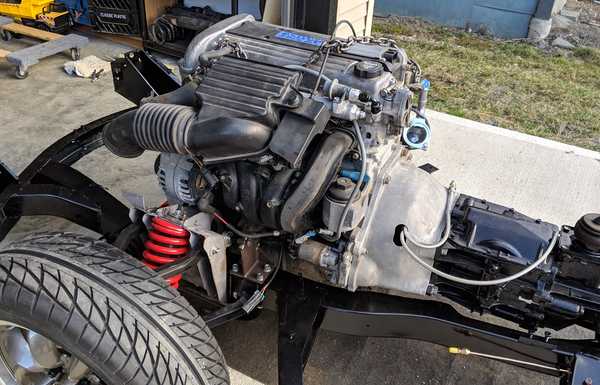
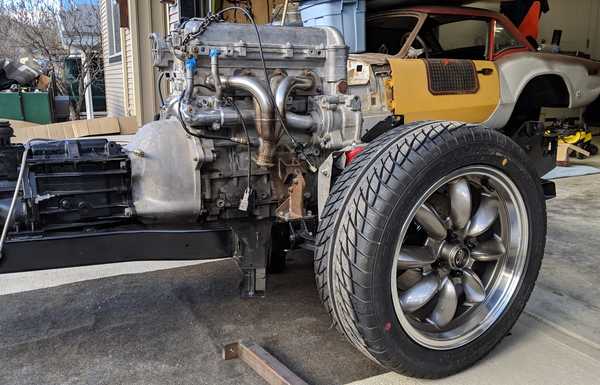
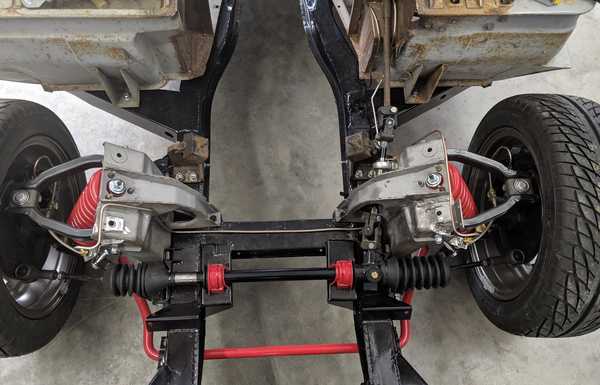
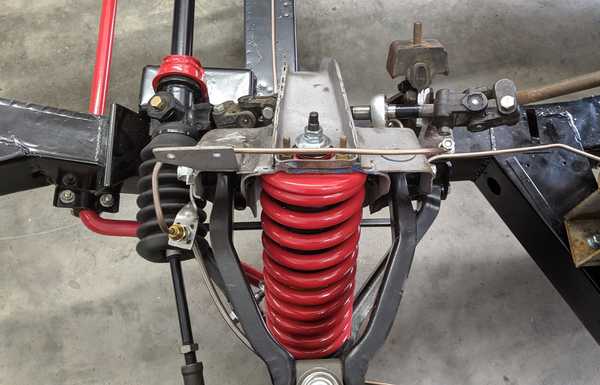
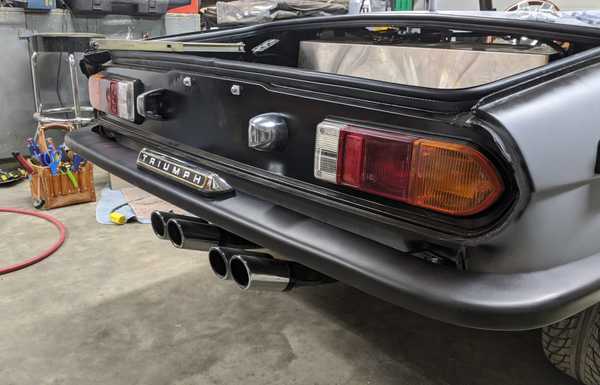
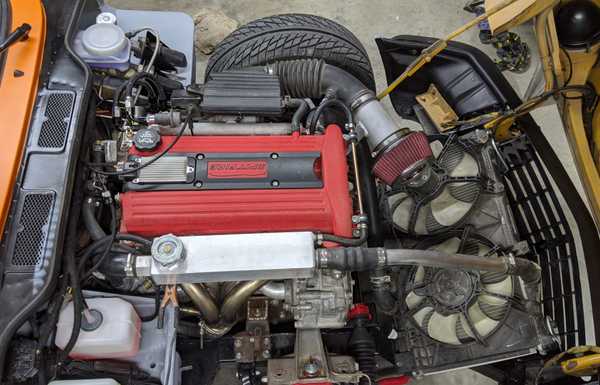
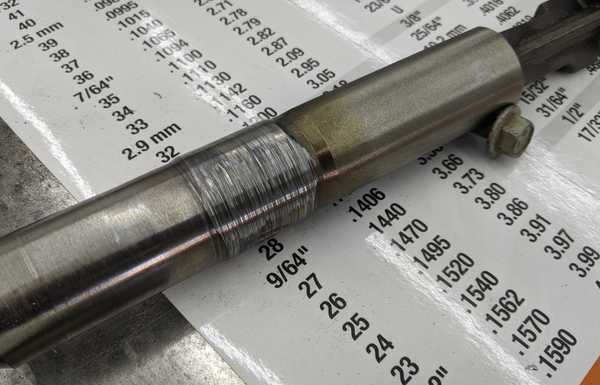

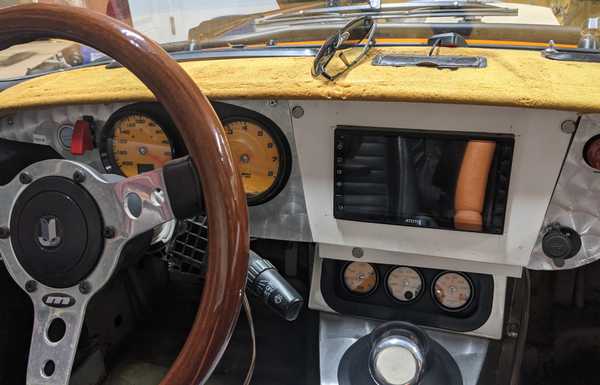
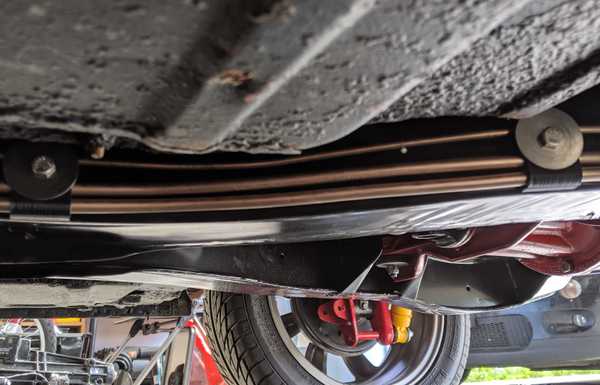
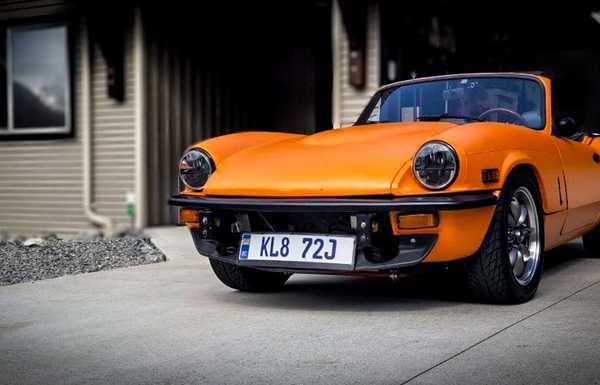
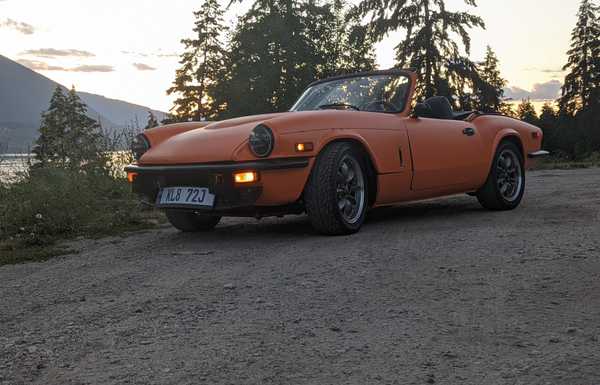
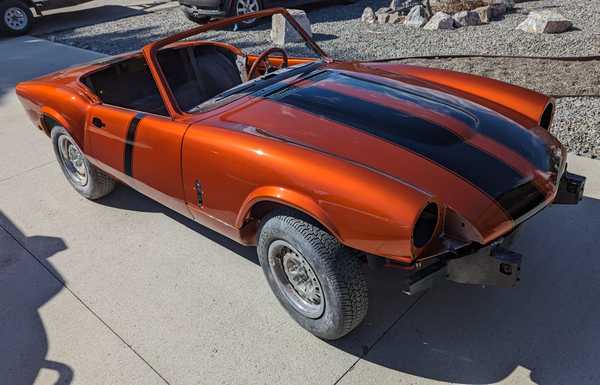
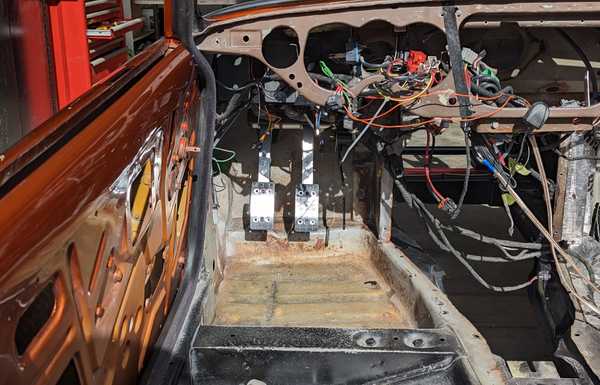
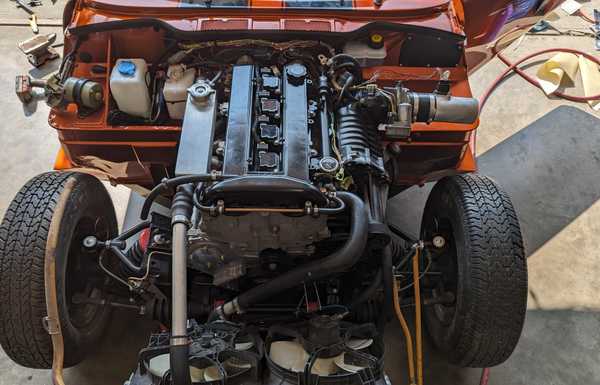
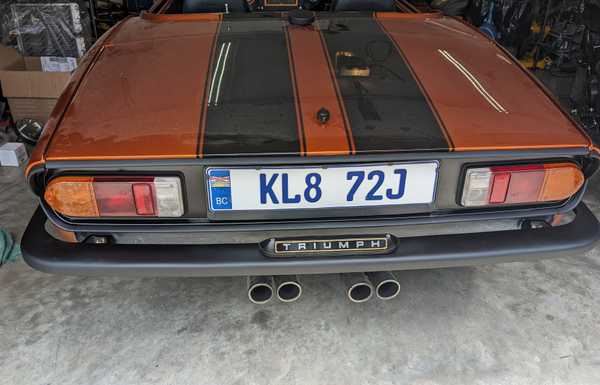
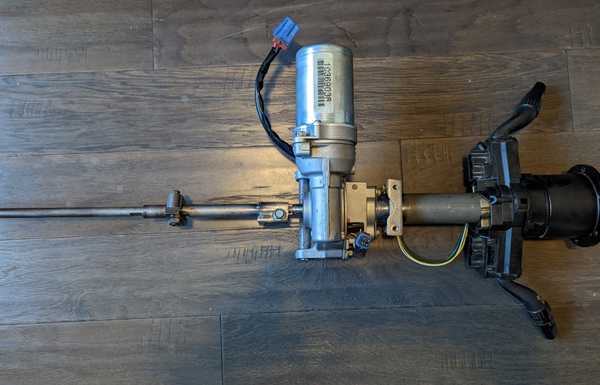
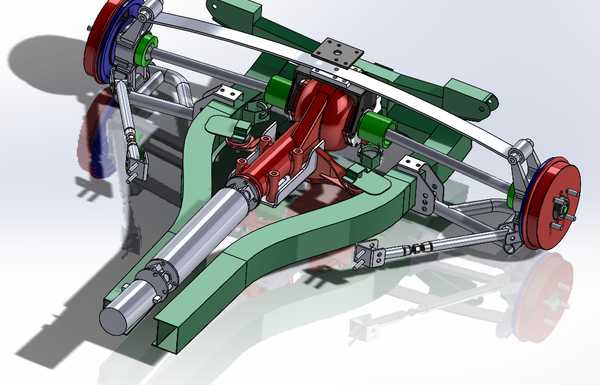
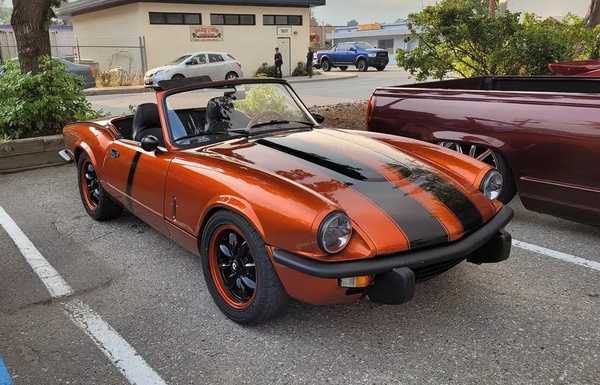
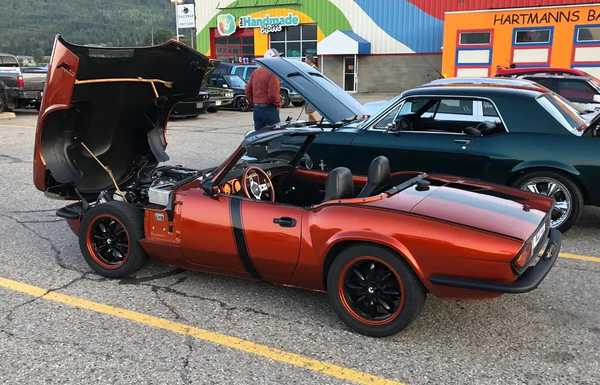
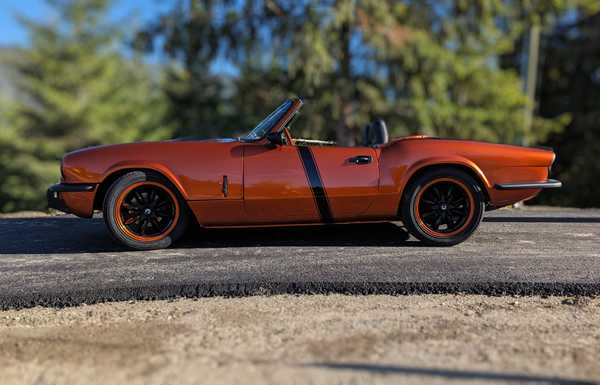

Mods
Body:
Stock, except for the MK1 Ford Capri bonnet bump grafted into the Spitfire bonnet. I chose that feature because it was wide enough to clear the front of the wide head on the Ecotec, and still look more or less period correct.
Custom aluminum doghouse and tunnel.
Chassis:
Aside from a little clearancing here and there for the engine and transmission, the frame is stock. Once modified, it was sandblasted and powder coated.
Brakes:
The small Spitfire brakes were swapped for the larger units from a GT6+. These were pretty much a bolt on swap; the GT6 front spindles were required as well as the plumbing for the GT6.
To do: Toyota truck front calipers and Cressida vented rotors.
Rear Suspension and Differential:
Subaru R160 VLSD (3.9:1 ratio, 3.08 on deck) & CV axle conversion with GT6 uprights.
Front Suspension:
Stock style with GT6 spindles and Canley Classics adjustable upper A arms. Spax adjustable rate and height shocks. GT6 anti-roll bar and Wolfitt swaybar links.
Transmission:
Hybrid Camaro / S10 T5 5 speed. The gearset comes from the Camaro, and the tail housing from the S10 to locate the shifter as forward as possible. VR speed sensor was shaved and wires soldered on and epoxied into place to save space. The reverse switch is a Ford unit.
Engine:
GM LSJ Ecotec from a 2007 Chevrolet Cobalt.
Rated:
241 hp at 6,400rpm
218 lb-ft at 5,400rpm
Custom made stainless short tube header.
Engine Management:
GM P12 ECU, unlocked to run standalone with HPtuners
Innovate WB O2 & gauge
Wheels and tires:
15x6 Rota RB wheels with 195 50 R15 Falken tires
Electrical System:
Complete hand rewired with TXL wire. The only remaining Lucas parts are the wiper motor and light housings.
Acura signal and wiper controls
Speedhut Revolution Cobra Speedo, tach, water, oil and fuel gauges.
Custom ignition, starting and accessory control system
Stock, except for the MK1 Ford Capri bonnet bump grafted into the Spitfire bonnet. I chose that feature because it was wide enough to clear the front of the wide head on the Ecotec, and still look more or less period correct.
Custom aluminum doghouse and tunnel.
Chassis:
Aside from a little clearancing here and there for the engine and transmission, the frame is stock. Once modified, it was sandblasted and powder coated.
Brakes:
The small Spitfire brakes were swapped for the larger units from a GT6+. These were pretty much a bolt on swap; the GT6 front spindles were required as well as the plumbing for the GT6.
To do: Toyota truck front calipers and Cressida vented rotors.
Rear Suspension and Differential:
Subaru R160 VLSD (3.9:1 ratio, 3.08 on deck) & CV axle conversion with GT6 uprights.
Front Suspension:
Stock style with GT6 spindles and Canley Classics adjustable upper A arms. Spax adjustable rate and height shocks. GT6 anti-roll bar and Wolfitt swaybar links.
Transmission:
Hybrid Camaro / S10 T5 5 speed. The gearset comes from the Camaro, and the tail housing from the S10 to locate the shifter as forward as possible. VR speed sensor was shaved and wires soldered on and epoxied into place to save space. The reverse switch is a Ford unit.
Engine:
GM LSJ Ecotec from a 2007 Chevrolet Cobalt.
Rated:
241 hp at 6,400rpm
218 lb-ft at 5,400rpm
Custom made stainless short tube header.
Engine Management:
GM P12 ECU, unlocked to run standalone with HPtuners
Innovate WB O2 & gauge
Wheels and tires:
15x6 Rota RB wheels with 195 50 R15 Falken tires
Electrical System:
Complete hand rewired with TXL wire. The only remaining Lucas parts are the wiper motor and light housings.
Acura signal and wiper controls
Speedhut Revolution Cobra Speedo, tach, water, oil and fuel gauges.
Custom ignition, starting and accessory control system
Build story
When I was in high school, back in the late 80s, I bought a 1981 Spitfire. When I brought it home my mom said “Oh I had one of those!”. It turned out she had bought a brand new ‘65 Spitfire when she lived in Vancouver. Then I discovered that my Uncle (Dad’s bro) also had a ‘75 Spitfire that he had bought new. It seems my love for this car may be a hereditary condition.
Cars come and go – my first Spitfire was replaced by a ’68 Thunderbird, and that was replaced by a ’65 Chevelle ragtop, and many appliance cars and truck in between. I went several years without a Spitfire, but caught the bug again – but this time it had to be more reliable and faster than my Previous Spitfire.
This car had to be at least as fun to drive from a handling perspective, and not easily embarrassed by every car on the road. Importantly Joseph Lucas, the “Prince of Darkness” and inventor of the electrical short, had to be exorcised from the car. Electrical is my main jam, so I was looking forward to that.
When it came to choosing a powertrain, I wanted something more modern and lightweight that would fit under the bonnet much as possible. I was cruising websites when I came across an article in Hotrod magazine about 4 cyl swaps becoming more popular, and it had a picture of the Ecotec with dual side-draught Webers and a T5 5 speed. With a little research I found that engine and trans combo barely weighed more than the old cast iron 1300 and 4 speed, and bone stock made nearly triple the HP. Some quick measurements showed it probably would be close to fitting, but my mind was made up when I saw variants of the Ecotec making 1,000+ HP. Not that I expect to ever hit 1,000, but everyone needs 1,000hp, right? Especially in a car that weighs less than 1800 lbs.
After years of slow progress and life getting in the way, the time finally came in the Spring of ’20 to drive the car for the first time. It passed the safety inspection first try and was licensed for the road that day!
Then disaster… after one brilliant month cruising in the sunshine, the original Ecotec I bought some 12 years earlier ate its own balance shafts and turned the oil into metallic silver paint. I don’t know exactly what happened – maybe the engine had a problem from the start, but it didn’t matter – I needed another one. Thankfully the Ecotec is plentiful in the wreckers and I had a replacement the following weekend. The change from the earlier L61 meant some rewiring, a different ECU and HPtuners – but about a month later I was back on the road, with nary a hiccup for the rest of the summer.
Still lots to do, and I love every moment of it. Nothing like a little grease under your nails to fix up a bad day.
This car has been a 12-year project, and like any good project car will never really be done. This car is me on wheels.
Cars come and go – my first Spitfire was replaced by a ’68 Thunderbird, and that was replaced by a ’65 Chevelle ragtop, and many appliance cars and truck in between. I went several years without a Spitfire, but caught the bug again – but this time it had to be more reliable and faster than my Previous Spitfire.
This car had to be at least as fun to drive from a handling perspective, and not easily embarrassed by every car on the road. Importantly Joseph Lucas, the “Prince of Darkness” and inventor of the electrical short, had to be exorcised from the car. Electrical is my main jam, so I was looking forward to that.
When it came to choosing a powertrain, I wanted something more modern and lightweight that would fit under the bonnet much as possible. I was cruising websites when I came across an article in Hotrod magazine about 4 cyl swaps becoming more popular, and it had a picture of the Ecotec with dual side-draught Webers and a T5 5 speed. With a little research I found that engine and trans combo barely weighed more than the old cast iron 1300 and 4 speed, and bone stock made nearly triple the HP. Some quick measurements showed it probably would be close to fitting, but my mind was made up when I saw variants of the Ecotec making 1,000+ HP. Not that I expect to ever hit 1,000, but everyone needs 1,000hp, right? Especially in a car that weighs less than 1800 lbs.
After years of slow progress and life getting in the way, the time finally came in the Spring of ’20 to drive the car for the first time. It passed the safety inspection first try and was licensed for the road that day!
Then disaster… after one brilliant month cruising in the sunshine, the original Ecotec I bought some 12 years earlier ate its own balance shafts and turned the oil into metallic silver paint. I don’t know exactly what happened – maybe the engine had a problem from the start, but it didn’t matter – I needed another one. Thankfully the Ecotec is plentiful in the wreckers and I had a replacement the following weekend. The change from the earlier L61 meant some rewiring, a different ECU and HPtuners – but about a month later I was back on the road, with nary a hiccup for the rest of the summer.
Still lots to do, and I love every moment of it. Nothing like a little grease under your nails to fix up a bad day.
This car has been a 12-year project, and like any good project car will never really be done. This car is me on wheels.